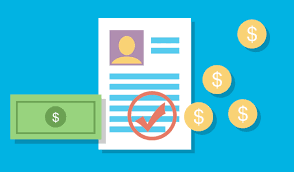In terms of generating revenue and growing your business, there’s one surefire thing you can do: process more loans. But if you feel like your capacity is already maxed out, it could be that your loan processing isn’t as efficient as it should be.
Inhibiting Factors in Loan Processing Efficiency
Over the past 10 to 12 years, banks, credit unions, and various online lenders have gradually placed an increased emphasis on technology. At first, it was merely digitization of paper processes. But then it became an outright pivot thanks to providers such as BankPoint who are offering innovative solutions.
Between the internet and cloud technology, almost 100 percent of loan processing is now handled electronically. This includes online applications, onboarding of new clients, processing, underwriting, and funding. However, in many cases, smaller lenders are failing to adapt as quickly. As a result, they’re falling behind.
This space is fast-paced and highly competitive. And if you study the leaders in the industry, they’re all pouring significant resources into advanced technology. They’re all hyperfocused on efficiency. Unfortunately, the lenders who fail to leverage these innovations will be left in the dust.
When it comes to loan processing efficiency, there are a few distinct areas where lenders are falling behind. For starters, there’s a lack of automation (usually accompanied by an unwillingness to let go of some level of control). Then there’s a lack of customer engagement and touchpoints, which makes it hard to facilitate smooth communication with clients. On the backend, there’s usually a lack of clarity regarding how to best use data and analytics. Security concerns are also high, which leads to an overall feeling of unrest.
4 Tips for More Efficient Loan Processing
Improving loan process efficiency begins with these addressing the inhibiting factors mentioned above. Keeping this in mind, here are several tips you can use to make your loan processing more efficient across the board:
-
Choose the Right Loan Origination Software
The first step is to onboard the right loan origination software. And while trying to choose between dozens of options may seem difficult, it’s a process that you have to take seriously. Selecting the right platform could single-handedly transform your business for the better.
There are plenty of options out there, but you can’t be swayed to choose one just because a successful competitor is (or because you see a snazzy ad). The key is to select one that works for you.
For example, SPARK is focused on helping business lenders (while most other platforms are more focused on mortgages). If you’re working with small businesses, it makes sense that you go with loan origination software that specializes in this type of loan underwriting. This sounds like simplistic advice, but you’d be surprised how many lenders don’t take a factor like this into account.
-
Streamline Data Collection
In a recent poll by Moody’s Analytics, 56 percent of lenders say manual collection of data is their biggest challenge in initiating the loan process. Thankfully, this is also one of the easiest aspects to address. With the right automation, you can reduce inconsistency and delays that typically come with manual data collection.
The best solution is to implement a customer-facing web portal where clients are able to input their own information and data in a centralized, secure place that integrates with your own loan origination platform.
-
Kiss Paper Goodbye
If you’re still using paper in any area of your business, it’s time to step into the modern era. There’s no excuse for using paper at this point. Everything can (and should) be digitized for greater efficiency and accessibility. This speeds up the receipt of documents, enhances the ability to accurately process applications, eliminates processing costs, and mitigates the risk of lost documents. It also makes it easier to satisfy compliance requirements.
-
Leverage Analytics
Data is critical from a growth perspective. You should be collecting as much data as you possibly can. (That’s the easy part.) Once collected, become obsessed with analyzing it. This will show your strengths, weaknesses, and opportunities. Moving forward, you can use this data to guide your decision making and improve your efficiency at each phase of loan processing.
Adding it All Up
There is no “easy button” that you can click to solve all of these issues. The only way to improve your loan processing efficiency is by implementing a comprehensive strategy that addresses each of these problem areas and concerns. Eventually, your commitment to constant and never-ending improvement will yield positive results.
